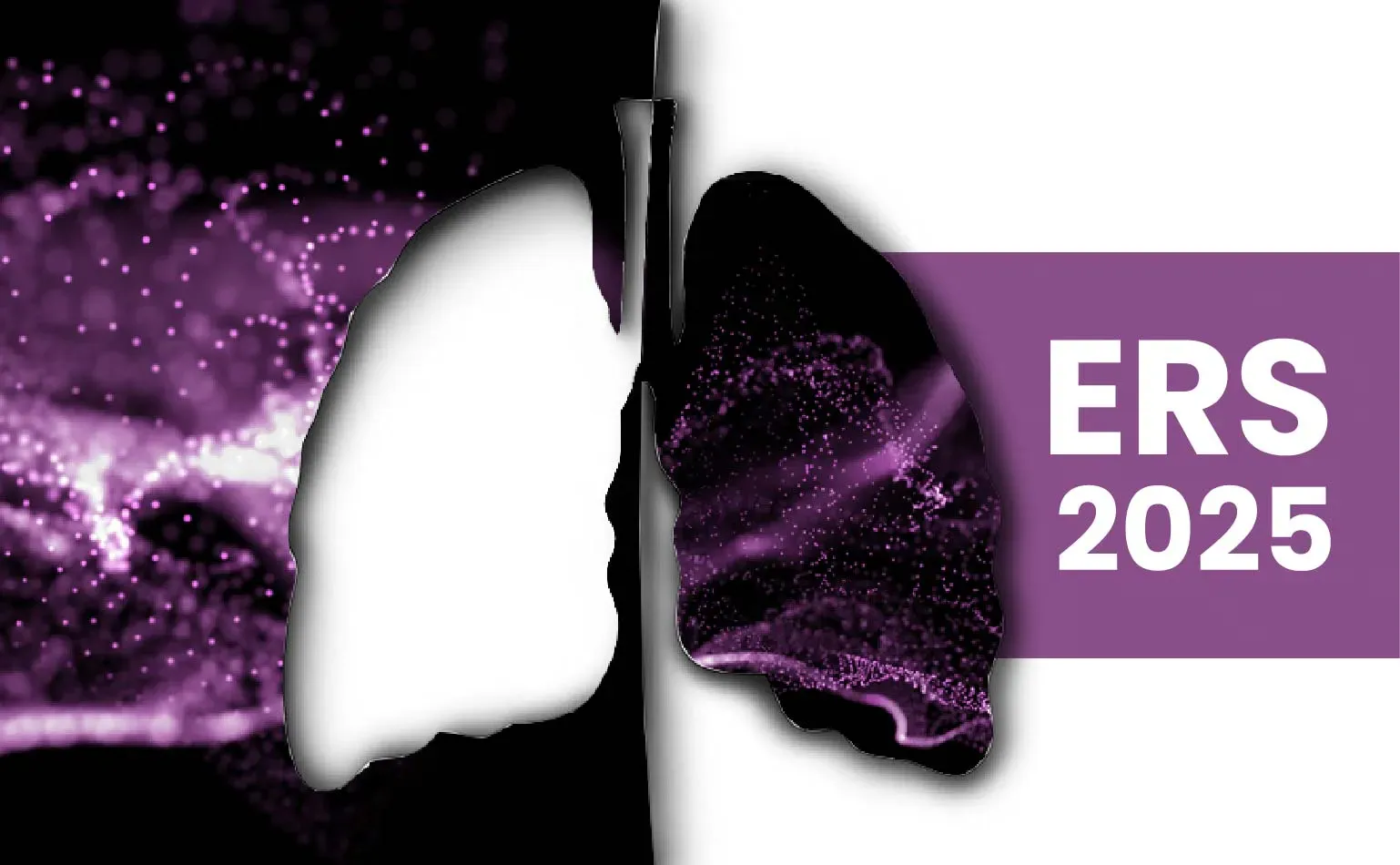ERS 2025: Respiratory Function: Highlights
Lung Function Trajectories Across Airway Diseases
Presenter: Rosa Faner (Spain)
The NOVELTY observational 3-year study analyzed lung function trajectories in 9,131 participants with asthma and/or COPD by measuring FEV1 and FVC annually. Four distinct trajectories were identified for both FEV1 and FVC:
- Stable (FEV1: 48%, FVC: 50%)
- Slow decline (FEV1: 20%, FVC: 18%)
- Rapid improvement (RI) (FEV1: 16%, FVC: 15%)
- Accelerated decline (AD) (FEV1: 16%, FVC: 17%)
In the accelerated decline group versus the rapid improvement group, the diagnosis distribution was approximately 52% vs 57% in asthma, 13% vs 13% in asthma+COPD, and 35% vs 30% in COPD patients respectively. The annual change in FEV1 was +4.1% in the RI group compared to -6.9% in the AD group (P < 0.001). For FVC, the yearly change was +4.5% in RI and -7.8% in AD. Baseline smoking, age and exacerbations before enrolment differed significantly across FEV1. Also, significant differences were observed in smoking status, sex, age as well as baseline and follow-up exacerbations across FVC trajectories. The study concludes that both FEV1 and FVC trajectories provide important clinical information, with some patients experiencing rapid lung function improvement while others undergo accelerated decline.
The Influence of Body Mass Index on Lung Function Development from Infancy to Six Years of Age
Presenter: Malena Gwerder (Switzerland)
Accelerated BMI growth in early life has been associated with impaired lung function development in school-age children, especially in obesity-related research. However, the impact of early-life BMI growth on lung function development from infancy onwards has not been previously investigated.
This study evaluated the relationship between BMI and lung function growth from infancy to six years using data of 363 healthy infants obtained from prospective Basel-Bern Infant Lung Development (BILD) Cohort. BMI and lung function were measured at 44 weeks postmenstrual age (using ratio of PTEF/TE (peak tidal expiratory flow to expiratory time)) and again at six years (using FEV1 and FVC). Results showed that higher BMI z-scores were linked to lower lung function z-scores from infancy to school age for both FEV1 (estimate: -0.10, 95% CI: -0.18 to -0.02, p = 0.016) and FVC (estimate: -0.12, 95% CI: -0.22 to -0.02, p = 0.017). There was a significant interaction between age and BMI z-scores for both outcomes (p interaction < 0.005).
It was concluded that rapid increases in BMI were linked to impaired lung function growth during the first six years of life, providing new insights into early-life risk factors for long-term respiratory health outcomes.
Effects of a Rehabilitation Nursing Program on Functional Condition in a Community Setting
Presenter: Rui Pedro Marques da Silva (Portugal)
This study assessed the outcomes of a structured rehabilitation nursing program delivered in a community gym over 12 months. A total of 68 participants engaged in personalized physical therapy sessions encompassing resistance training, cardiovascular workouts, and functional mobility exercises.
2,199 patient contacts were made, involving individuals with functional deconditioning, chronic respiratory diseases, neurodegenerative disorders, and a subset requiring non-invasive ventilation. Results demonstrated significant improvements in all areas, including increased muscle strength—especially in lower limb endurance and upper body resistance—enhanced joint mobility, and greater overall flexibility. Pain levels decreased, supporting better program adherence and improved quality of life. The Timed Up and Go (TUG) test showed consistent reductions in completion times, indicating enhanced functional mobility and a lower risk of falls. The findings underscore the impact of a structured community-based rehabilitation nursing model, showing its role in supporting physical function and overall well-being across varied rehabilitation populations. Additional research is needed to evaluate long-term outcomes and broader program implementation.
Respiratory Functions, Exercise Capacity, and Oxygenation in Parkinson's Disease: A Comparison with Healthy Individuals
Presenter: Ayşenur Güvenir
Cardiopulmonary involvement, which can contribute to mortality, is frequently observed in Parkinson’s disease (PD). Limited data exist on peripheral muscle oxygenation in PD patients, which may be compromised. This study aimed to compare maximal exercise capacity, respiratory muscle strength, and muscle oxygenation between PD patients and healthy controls.
A cross-sectional study was conducted involving 30 PD patients (Hoehn & Yahr stages II–III) and 26 healthy individuals. Significant reductions (p<0.05) were found in FEV1 (liters and % predicted), FVC (liters and % predicted), maximal inspiratory pressure (MIP), maximal expiratory pressure (MEP), peak VO2, VCO2, and VO2/HR in PD patients compared to controls. Additionally, changes in muscle oxygen saturation (ΔSmO2) and minimum total hemoglobin (THbmin) were significantly lower, whereas total hemoglobin (THbtotal) was higher (p<0.05) in the PD group.
In conclusion, patients with mild to moderate Parkinson’s disease demonstrate decreased pulmonary function, weakened respiratory muscles, reduced exercise capacity, and impaired muscle oxygenation. These findings underscore the importance of regular monitoring of respiratory and muscular function in PD. The observed reduction in muscle oxygenation suggests deficits in oxygen delivery and utilization, contributing to exercise intolerance.
Ref: European Respiratory Society Congress 2025, September 27 - October 1, Amsterdam, Netherlands




